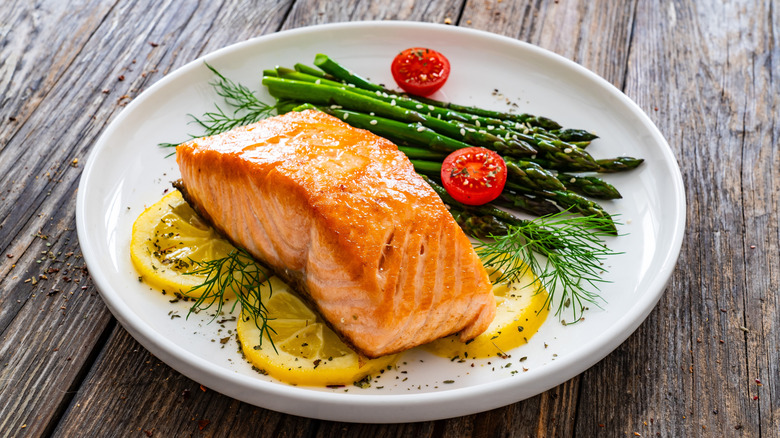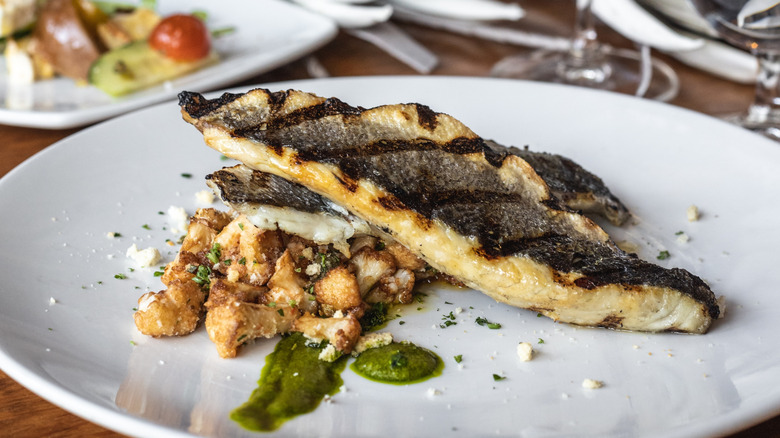Don't Lose Half Your Fish To The Pan: The Secret To Crispy Skin
Whether you're making a whole fish, like a branzino, or pan-frying some pieces, that crackly, crispy skin is one of the ultimate joys. To find out how to get yours perfect every time, Food Republic spoke to Maricel Gentile, chef and owner of Maricel's Kitchen, author of "Maricel's Simply Asian Cookbook". According to Gentile, there are a couple of things to keep in mind.
Similarly to how you would pat fish dry before frying, or how you would do the same thing to sausages to ensure they brown correctly, Gentile said that starting the cooking process with very dry fish is key to the crispiest skin. "Pat the skin well with paper towels, and score it lightly[,] so it does not curl," she explained. Once seasoned and ready to go, she recommended heating your pan with just a touch of oil (a thin layer will do the trick), and wait for it to shimmer before placing your fish skin side down. "Press gently — very gently — with a spatula for the first 30 seconds so the skin makes even contact. After that, leave it alone." She went on to say that you'll know it's ready to turn when the edges are a nice gold color and the skin lifts on its own.
When it comes to varieties, Gentile loves using salmon, Korean sea trout, or mackerel. "Their higher fat content gives you that golden crackle," Gentile said. She also noted that both snapper and branzino produce a beautiful crisp due to their thin, delicate skin.
The two biggest mistakes to avoid when cooking fish
When making fish, it's important to get the temperature just right. For instance, Maricel Gentile explained that one of the biggest no-nos is to get overly excited and add your fish to the pan before it's had sufficient time to heat up. "When the pan or oil is not ready, the skin bonds to the metal and sticks," Gentile said.
Instead of rushing, give the pan and oil plenty of time to do their thing. When checking to see if they're properly heated up, take note of how the oil looks. While shimmering is the universal sign that it's ready to go, she also offered one of her favorite tips that she teaches her students. "Take a bamboo chopstick or skewer and dip the tip into the oil. If you see steady bubbles forming around it, the oil is ready for frying. If no bubbles rise, the oil needs more time," she said.
However, you don't want to wait too long either. "If it is smoking," she said, "the oil is too hot." Your fish might not stick, but the oil itself is starting to burn and break down — this won't lend a pleasant smoky taste to your fish; it will ruin it with acrid bitterness. With these notes, you'll get perfect skin every time. "For me, that sound of the skin crackling and lifting cleanly is one of the simplest joys of cooking fish."


